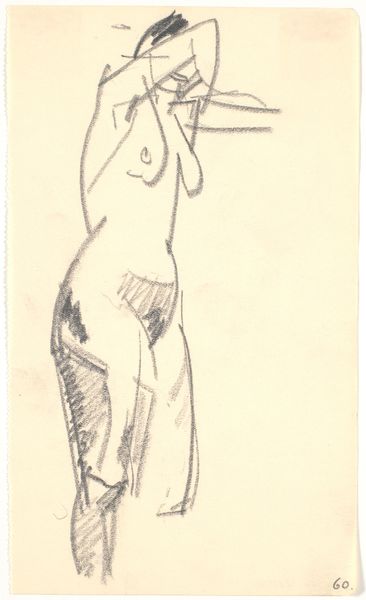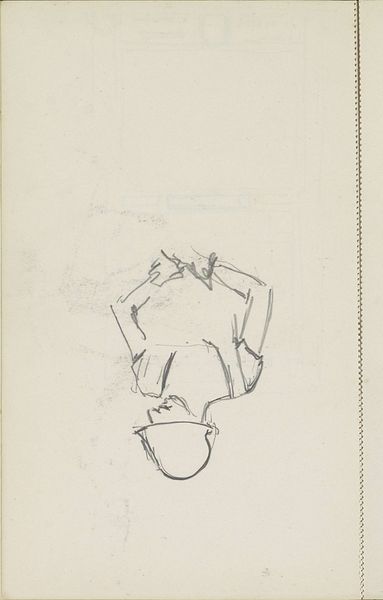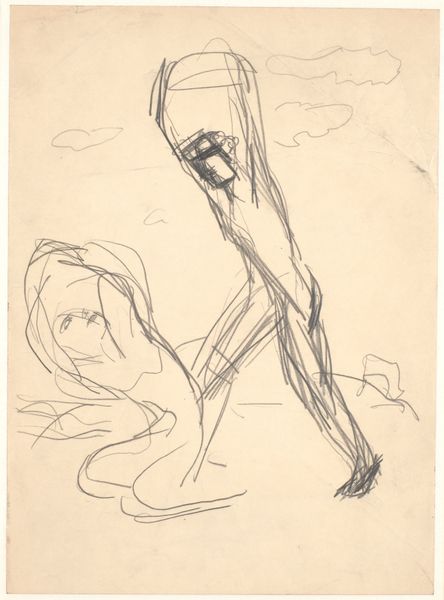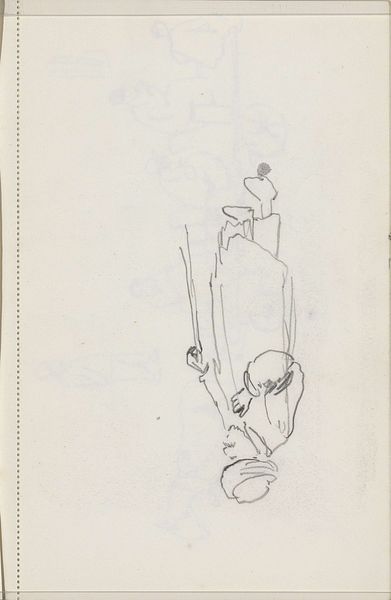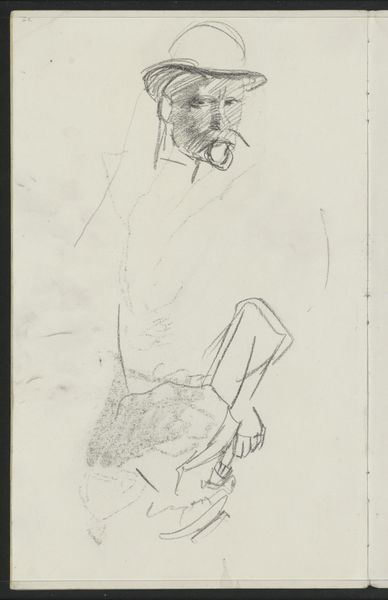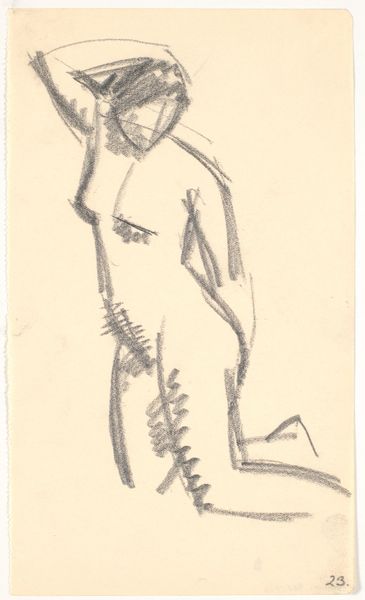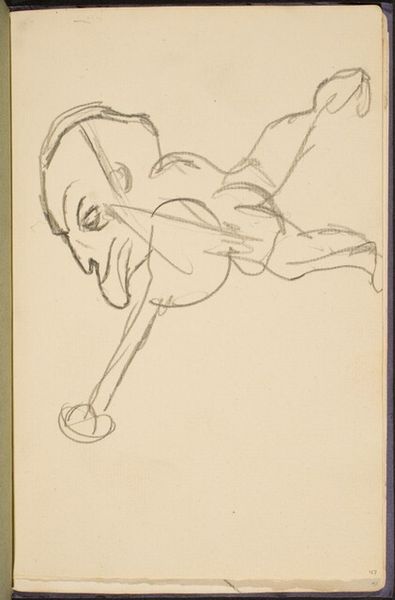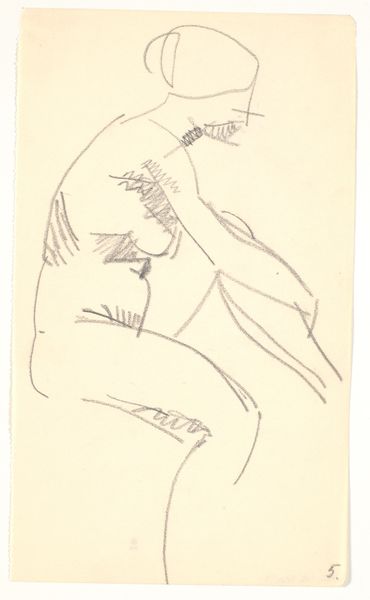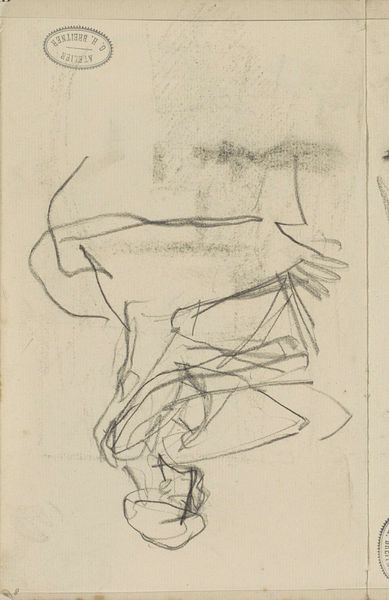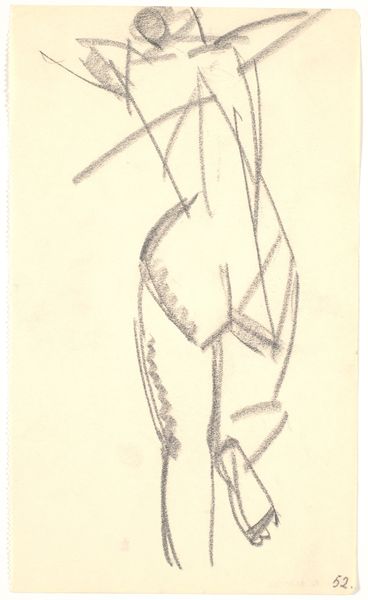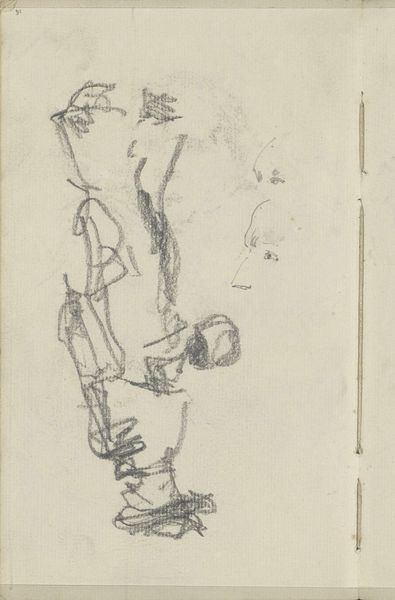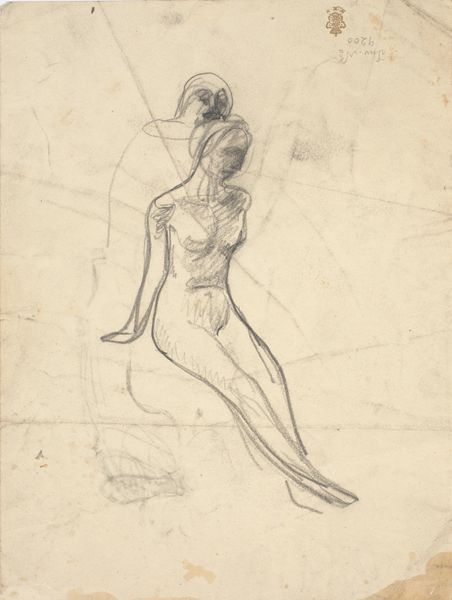
drawing, pencil
#
drawing
#
figuration
#
pencil
Dimensions: 316 mm (height) x 237 mm (width) (bladmaal)
Curator: Welcome. Today we're looking at a drawing titled "Figurrids" by Karl Isakson, dating roughly from 1900 to 1950. It resides here at the SMK, Statens Museum for Kunst. Editor: My first impression? Ghostly. These sketched figures seem caught between being and nothingness. The simplicity of the pencil strokes belies a powerful emotional rawness. Curator: Indeed. Isakson's choice to represent these figures with such economy opens avenues to consider themes of identity, mortality, and perhaps even the anxieties of representation itself during that period. Editor: The limited medium—just pencil on what looks like ordinary paper—speaks to the raw physicality of creation. We’re witnessing the artist's hand, almost unmediated. It’s a direct transfer of thought to surface, making the means of production visible. Was he exploring movement? The forms are vaguely intertwined. Curator: Potentially. Isakson was engaging with symbolist ideas prevalent at the turn of the century. He experienced significant depression, impacting both his life and artistic vision, and "Figurrids," may express this internal struggle. I also believe it challenges our gaze towards depictions of the human body itself. Are these figures male or female? Editor: The lack of detail absolutely prevents an immediate understanding of sex or class, it almost democratizes their representation by focusing purely on the corporeal, highlighting the sheer physical effort inherent in both creation and being. Look how much pencil it takes to try to create the illusion of these heavy figures. Curator: Considering the broader art historical and societal context, especially notions of masculine and feminine ideals in the early 20th century, Isakson perhaps pushes us to deconstruct these very binaries. How are social norms and power relations imprinted upon the body? Isakson is, if I am correct, interested in these ideas. Editor: Absolutely. It's about stripping down to the base elements, confronting material and the making process alongside these almost ghostly figures. It invites reflection on labor—the artist's labor, the subjects' lived labor and the sum total we now appreciate as viewers today. Curator: In a period marked by shifting identities and socio-political upheavals, Isakson encourages us to interrogate our preconceptions and to consider that a seemingly simple sketch can hold multilayered significance. Editor: Precisely, it reminds us that artistic creation, at its heart, is rooted in physicality and invites us to confront the fundamental elements that shape our existence. Curator: I think we will agree it’s a haunting echo. Editor: Absolutely. A whisper made physical.
Comments
No comments
Be the first to comment and join the conversation on the ultimate creative platform.
